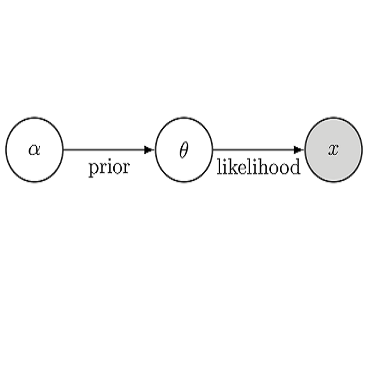Medical imaging is a form of technology that has revolutionized the medical field in the past century. In addition to radiology imaging of tumor tissues, digital pathology imaging, which captures histological details in high spatial resolution, is fast becoming a routine clinical procedure for cancer diagnosis support and treatment planning. Recent developments in deep-learning methods facilitate the segmentation of tumor regions at almost the cellular level from digital pathology images. The traditional shape features that were developed for characterizing tumor boundary roughness in radiology are not applicable. Reliable statistical approaches to modeling tumor shape in pathology images are in urgent need. In this paper, we consider the problem of modeling a tumor boundary with a closed polygonal chain. A Bayesian landmark-based shape analysis (BayesLASA) model is proposed to partition the polygonal chain into mutually exclusive segments to quantify the boundary roughness piecewise. Our fully Bayesian inference framework provides uncertainty estimates of both the number and locations of landmarks. The BayesLASA outperforms a recently developed landmark detection model for planar elastic curves in terms of accuracy and efficiency. We demonstrate how this model-based analysis can lead to sharper inferences than ordinary approaches through a case study on the 246 pathology images from 143 non-small cell lung cancer patients. The case study shows that the heterogeneity of tumor boundary roughness predicts patient prognosis (p-value < 0.001). This statistical methodology not only presents a new model for characterizing a digitized object's shape features by using its landmarks, but also provides a new perspective for understanding the role of tumor surface in cancer progression.
翻译:医学成像是一种在上个世纪里使医学领域发生革命的技术形式。除了肿瘤组织放射成像外,数字病理学成像(在高空间分辨率中捕捉了组织组织组织体细节)正迅速成为癌症诊断和治疗规划的常规临床程序。最近深层学习方法的发展有助于将肿瘤区域从几乎细胞一级从数字病理图象中分解出来。为描述放射界肿瘤边界粗糙而开发的传统形状特征并不适用。在病理图象中的肿瘤形状建模的可靠统计方法十分紧迫。在本文中,我们考虑以封闭的多角链形式模拟肿瘤边界的模型问题。一个基于巴耶斯地标特征的形状分析模型(BayesLASA)模型的精确性能比最近开发的癌症肿瘤特征检测模型要强。我们从模型的精确度和效能的角度展示了一种基于Bayesalimical-roral-roral-ral-roral-ral-ral-ral-ral-ral-ral-ral-sisal-ral-ral-rvial-rvial-rvial-rvial-sisal-sisal-rvial-sislislislismislisl)的模型分析方法,我们从模型的模型研究中演示了一种非分析方法,从模型学的模型的模型学学方法,从不通过一个不通过一个不通过常规和直路路路路路路路路路路标法的模型的模型学学学学学学学学学学学学学的模型学学学学学的模型学的模型学学学学学的模型学的模型学的模型学的模型学的模型学的模型分析方法。



